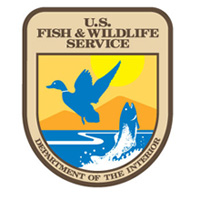Gulls
Gulls, especially western gulls, would normally be at risk of either consuming bait pellets directly or consuming mice that have eaten bait, and could experience negative impacts from the rodenticide. However, based on extensive research and field tests, the Service is confident that gulls can be kept away from an impacted area during a mouse eradication. Specifically, the Service would conduct a gull hazing program to remove gulls from the island during the operation and for the short duration of bait availability. In addition, the Service would remove any mouse carcasses detected, to further reduce the risk to gulls and other scavengers.
Raptors
Raptors, such as burrowing owls and peregrine falcons, could also be at risk if they fed on exposed mice, gulls or invertebrates. Thus, efforts would be made to capture, hold or translocate any raptors present on the islands for the duration of the eradication project.
Salamanders
Salamanders could be exposed to rodenticide by consuming insects that have eaten bait pellets. However, the threat to salamanders is expected to be low. Nonetheless, because of the uniqueness of the island population, a limited number of salamanders would be captured and held for the duration of the project as a precautionary measure.

